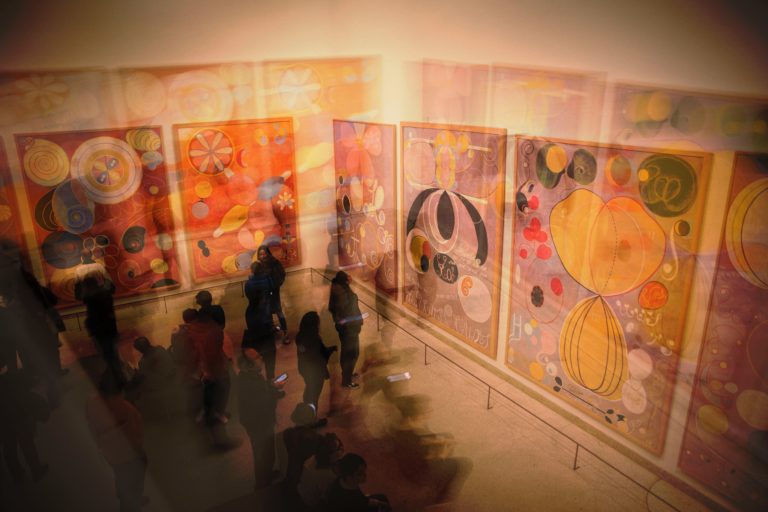A famous photograph, taken by Robert Mapplethorpe in 1982, shows the French artist Louise Bourgeois grinning, with an oversized latex and plaster phallus crooked under her arm like a baguette or paper bag of groceries. Bourgeois was 60 in the year that the picture was taken. Although she had been producing artwork since her early 20s, her stature as an artist had only recently been elevated through the efforts of the feminist art critic Lucy Lippard. In the photograph, the artist is holding a sculpture she produced in 1968. When exhibited in a gallery, it hangs in the air on a wire, which is looped over a heavy meat hook. This sculpture is called Fillette, or “Little Girl.”
Much is suggested by Fillette and its contexts. Semantic, material, gestural, and historical meanings fold into each other dizzyingly. There is extensive writing about Bourgeois’s work as it responds to surrealism and psychoanalysis. A confessional artist statement titled “Child Abuse” from 1982 — in which Bourgeois attributes her practice to the frustration she felt as a child observing her father’s adultery — has contributed to a significant body of biographical writing about the artist’s practice in relation to her life. The mass of theory and history that has been connected to her practice is overwhelming.
As a young woman encountering Bourgeois’ work for the first time, I had almost none of these tools. Recovering from an eating disorder and acutely uncomfortable in my own skin, I responded to images of Bourgeois’s work, printed in library books, physically first. The mysterious red text, the twisting metallic bodies, the dangling soft limbs, the multitude of hands, the constructed spaces and the intrinsically strange sexuality of it produced a sharp stitch of recognition in me.
There’s an appreciation in Bourgeois’ work for the messiness of human bodies, our relationship to the material world, and the inseparability of our emotional, intellectual, and embodied selves. Humour, repulsion, desire, and pain inflect the objects that she has created. These attributes provide a breach in a western art historical canon that has long drawn binary divisions between such elements as form and material, physical and transcendent, male and female. Within this framework, first articulated by Aristotle in Physics, material, which is feminine, earthy, and bodily, desires to be molded by that which is rational, masculine, and formal. This has influenced aesthetics throughout modernity.
In Mapplethorpe’s photograph, Louise is grinning because she is delighted in her transgression. Her sculpture is grotesque and oddly vulnerable; a lonely penis that she created and named, it is castrated and out there in the world on its own. If she is laughing, it is not because her Fillette is inherently funny, but because she knows that she is willfully crossing a boundary. Her sculpture is of this world first, grounded in the circumstances of its creation and the responses that it engenders.
Bourgeois’ work cleaves to that which is contingent and materially specific. It embraces ways of knowing that are squishy, that ooze, that break or bend and are decidedly non-transcendent. This might be what I loved first about Louise Bourgeois. In her work, I found a recognition of something that I already knew but hadn’t seen conveyed so potently in art—that the stakes of existing in a body are unendingly high.

